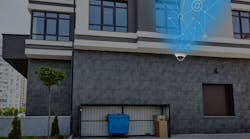So lets start with the basics. Many of you might already know this but it is worth recapping the different hardware pieces that make up ip networks.
There are four major hardware components:
- Router
- Firewall
- Switch
- End Node
Router:
Routers forward packets from one network to another. Traditional routers are used to terminate you WAN connections but as Metro Ethernet becomes more and more popular a traditional router can be replaced with a firewall or layer 3 switch (we'll discuss those in another blog)
Firewall:
We all know what this does. It secures your network from outside (and inside) vulnerabilities. Normally it is also given the task of doing the NAT for the network. Briefly NAT (Network Address Translation) takes the public IP address you get from the ISP and turns it in to a private IP address. You will run into the firewall A LOT when you try to set up remote access to your NVR.
Switch:
This brings the network together. Switches are normally Layer 2 devices and forward packets to the endpoints by using its unique hardware (MAC) address. The switch is where you will plug in your IP cameras, NVR, IP storage array, video servers, etc and the switch will quickly connect all of them together and enable communication. There are different varieties of switches as well which I will only name here but will discuss in more detail later.
- Power Over Ethernet (POE) Switches: These switches have built in DC power supplies that will provide 802.3af standards based 48V DC power through the RJ45 port on the switch so that you can power a POE device connected to the CAT5 cable up to 280' away.
- Layer 3 Switch: As convergence makes its way to network services we have seen a rise in converged network devices as well. One of the most important of these is the layer 3 switch. This switch combines the abilities of the router right into the switches operating system. So now the switch is capable of forwarding packets based on OSI layer 2 (MAC) and layer 3 (logical, IP) addresses.
- Gigabit Switch: Most of you should know this one...it provides greater speeds at up to 1000 Mbps (1Gbps) full duplex.
- 10 Gigabit Switch: Same concept as the gigabit switch above. It provides up to 10,000 Mbps (10Gbps) of dedicated wire rate data throughput on a single port.
side note:
Sometimes switches and hubs are used interchangeably but this is incorrect. Switches are far more efficient which results in greater speed and manageability. A switch will create a MAC address table so that when it sees a packet come in for a certain destination it knows exactly what port to forward it through while a hub is "dumb" and will just rebroadcast it on all ports. The nub creates a ton of extra broadcast traffic and will bog down your network instantly.
End Node:
The end node or end device is anything connected to at the ends of the wired or wireless network. This can be a laptop, PC, server, IP video camera, video server, etc.
This again is just a very high level view of the components of the network. There are obviously more and some of these devices can be used for multiple roles, some can be eliminated from networks depending on the topology but I wanted to start with the basics first.
Thanks for reading.
-Ronen Isaac Continental Computers & WLANmall.com



